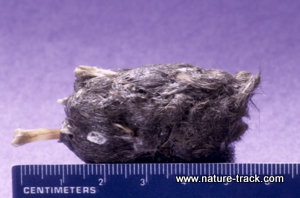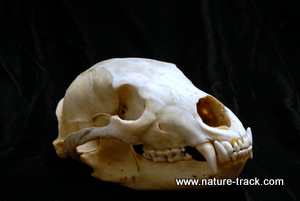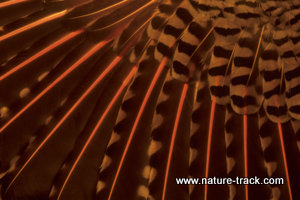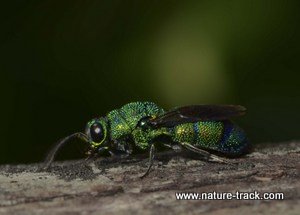Nature Collecting is a Great Hobby
Wandering in the woods, I happened to notice a few old bones scattered about. Not one to let such valuables go unexplored, I poked around, picking up a femur from under a snowberry bush, and digging out a portion of a partially buried, moldy jawbone from the hard ground. These I inspected, admiring the complexity of the skeletal system, and then set them back down.
Further searching netted a real treasure—a vertebra, as large as my hand, weathered but intact. I turned the piece over and over, enthralled by the intricacy of the specimen. Then, like finding an image in the clouds, I discovered an impish “face” staring back at me from the bone. Without hesitation, I stuffed it into my pack to show my kids at home.
Life around our house is often like show-and-tell in school. It is not unusual at all to find a quart-sized canning jar on the counter covered with a lid made from a sandwich bag poked full of air holes, and containing anything from a “cool” cat-face spider, or a praying mantis, to an “awesome” butterfly.
Inanimate objects, such as pieces of obsidian, shells, leaves, flowers, feathers or just about anything else can appear like magic on our kitchen table. It is not always the kids who bring things home either. My wife has had to tolerate years with a freezer full of road-killed snakes and other critters that I eventually make into study skins or other “useful” items (still want to eat at my house?).
Collecting natural things is a wonderful hobby, one that can be shared with family members and used to encourage children to understand and respect nature. Our own kids have literally grown up with many of the things I have collected over the years and can talk as intelligently about owl pellets as they can algebra.
So what do you collect and where do you find “it?” That is the beauty of this hobby! Any hike, stroll, or picnic becomes, as the military would say, a “target-rich environment” where there are no limits to the interesting things you can find. Some of the things I have found and treasured include:

A huge cottonwood leaf—just a network of veins after a winter of decomposition. I still vow that I will make an award-winning photograph of it one day.

Owl pellets, a personal favorite. These are oblong pellets, one to three inches long, comprised of fur and bone, which an owl regurgitates. The biologist in me likes to dissect the pellets to see what victims the owls have been eating and the kids love to help.

Skulls of various animals and birds. I enjoy comparing them to each other and using my field guides to identify the species (even if I already know it). This is another huge hit with kids. (Might as well say it here though: without a collecting permit, you are not allowed to possess any parts of some protected animals such as hawks, song birds or endangered species.)

Live critters such as spiders, garter snakes, frogs, salamanders, etc. These often have become photographic subjects but my rule is to release them alive in suitable habitat when I am finished. This activity is guaranteed to attract kids so be careful.
Bits and pieces of interesting geology. These have included a glittering stone from a creek, a chip of red obsidian, a small piece of pumice so light it floats, and a rock that resembles a honeycomb. Be aware though, taking anything, even rocks, from National Parks/Monuments is a major no no.

Anything that says an animal has been there such as a shed snake skin, bits of fur, feathers, or bone.

Insects. During my college days, I was required to make an insect collection. It was the most pleasant assignment I have ever had. Cathy, and our son, Jacob, then just a year old, would spend afternoons searching the gardens and hills around Utah State University and every new specimen would bring a gleeful, “Dadda, muhh!” (“muhh” meant bug), from Jacob. Since then, I have rarely pinned an insect, but I have captured many, preferring to observe their lives for a little time before releasing them.
I even enjoy rediscovering treasures I have packed away in the odd shoebox or a remote corner of my desk. Each Halloween, for example, I “rediscover” the vertebrae “gargoyle,” as it has become one of our favorite Halloween decorations where it hangs on our front door to silently greet visitors.
If collecting nature’s odds and ends is an addiction, by all means get hooked. You will find the windows of the natural world will open a little wider for you when you examine her treasures and will offer up glimpses and insights you never knew existed.
Goodreads Book Giveaway
The Best of Nature
by Terry R. Thomas
Giveaway ends June 24, 2014.
See the giveaway details at Goodreads.
